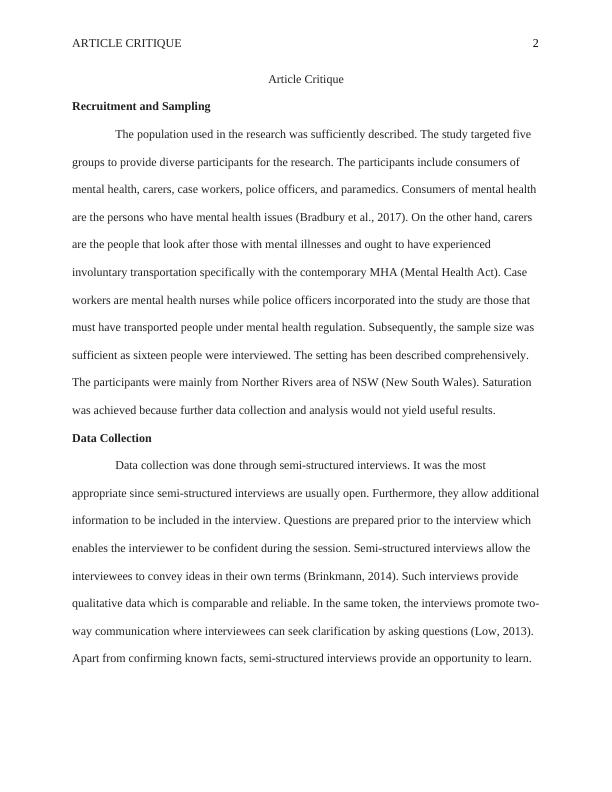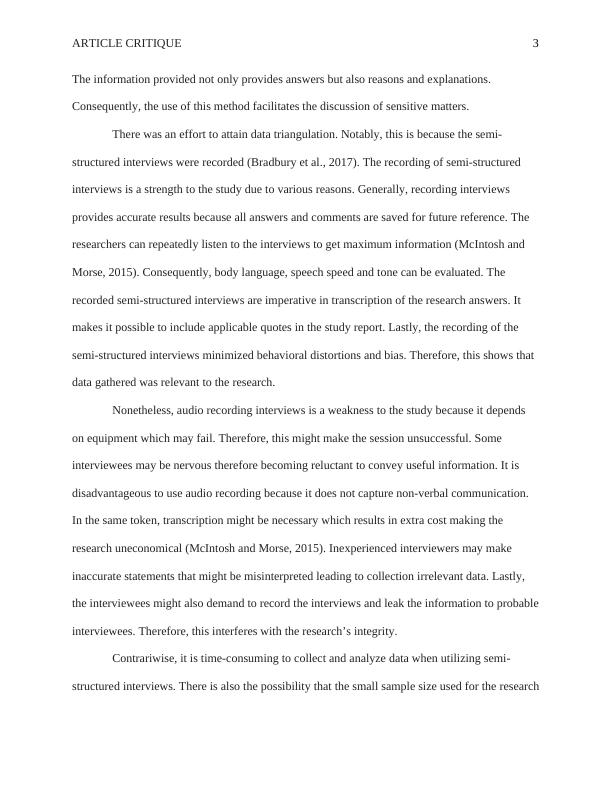Article Critique on Recruitment, Data Collection, Ethical Considerations, Data Analysis and Findings
This research aims to explore the lack of clarity around the implementation of changes in the New South Wales Mental Health Act through qualitative analysis of interviews with people who have experienced involuntary transport under the Act.
9 Pages2018 Words350 Views
Added on 2023-06-11
About This Document
This article critique focuses on recruitment, data collection, ethical considerations, data analysis and findings of a research study on involuntary transportation of people with mental health issues. The study utilized semi-structured interviews and achieved data triangulation. Ethical considerations were upheld, and the findings were effectively summarized. The research utilized triangulation to ensure the study's discoveries are credible.
Article Critique on Recruitment, Data Collection, Ethical Considerations, Data Analysis and Findings
This research aims to explore the lack of clarity around the implementation of changes in the New South Wales Mental Health Act through qualitative analysis of interviews with people who have experienced involuntary transport under the Act.
Added on 2023-06-11
ShareRelated Documents
End of preview
Want to access all the pages? Upload your documents or become a member.
Physical Activity and Wellbeing
|13
|922
|95
Critique of the Article
|6
|1510
|2



